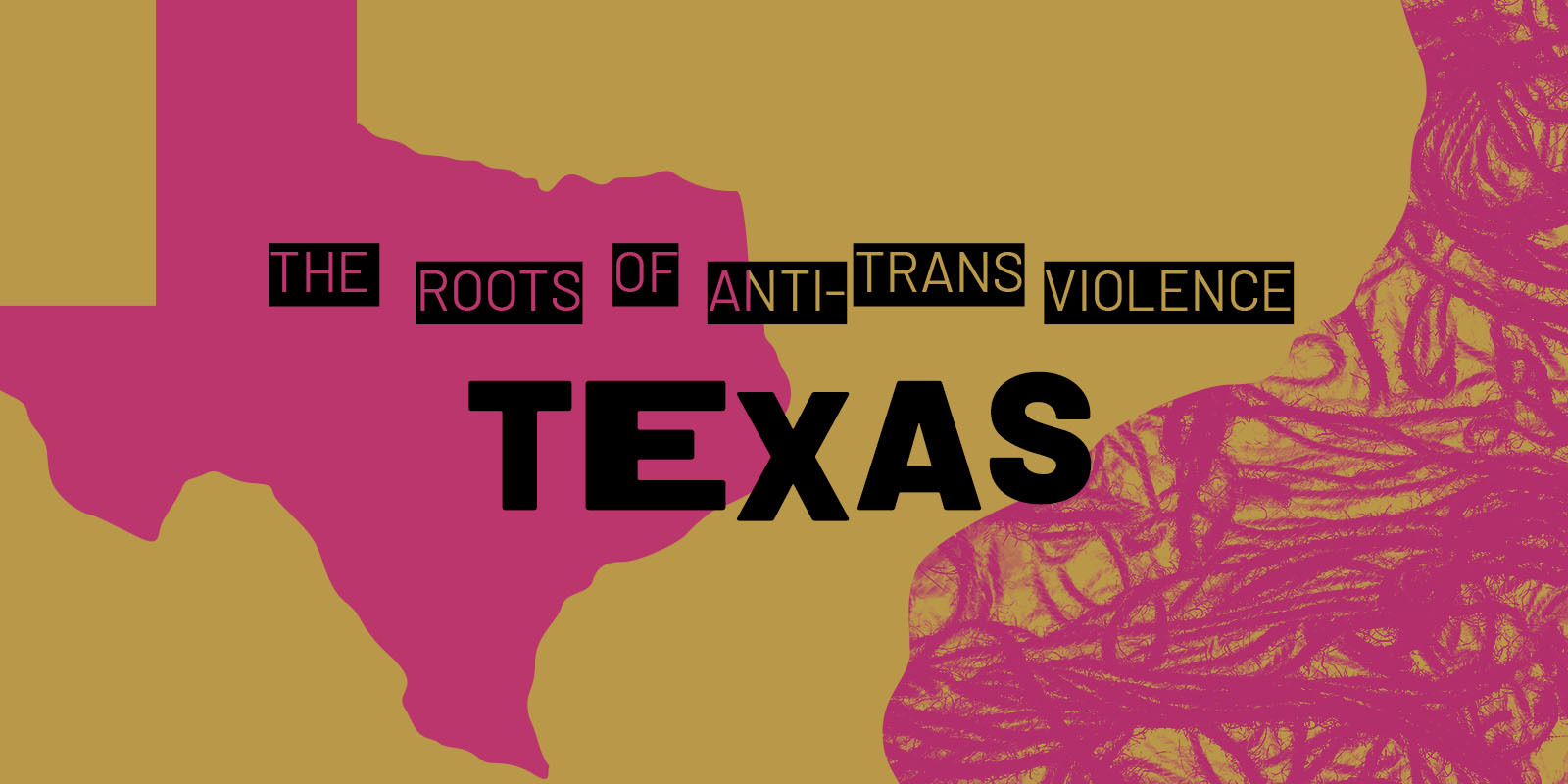The Roots Of Anti-Trans Violence
Before even completing the first quarter of this year, 12 transgender individuals have been violently killed. Since 2017, there have been 148* reported violent deaths of transgender individuals in the United States. The incidents of fatal transphobic violence in Texas over that time make up nearly 10% of them. These numbers do not only reflect the lives that were taken away, they reflect the lives that will continue to be in danger until further change is made.
The threat against trans folks in Texas — and all over the world — isn’t just a weapon, it’s a wall. The barriers put in place to keep transgender people, trans women of color especially, from living within our society eventually keep them from living at all.
Read the full story at Autostraddle.
Data
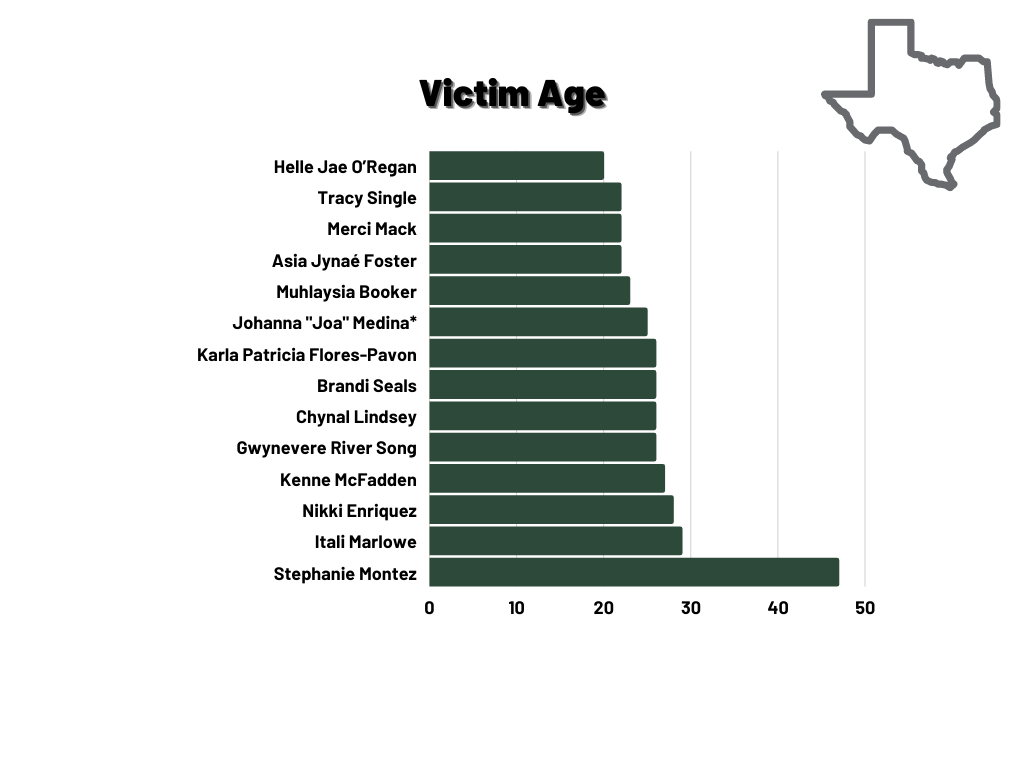
Ages of the 14 trans and nonbinary victims of fatal transphobic violence tracked in Texas between 2017-2020, plotted from low to high on a stacked row chart.
With the exception of Stephanie Montez, 47, each of the victims was between ages 20 and 30. The youngest was Helle Jae O’Regan, 20.
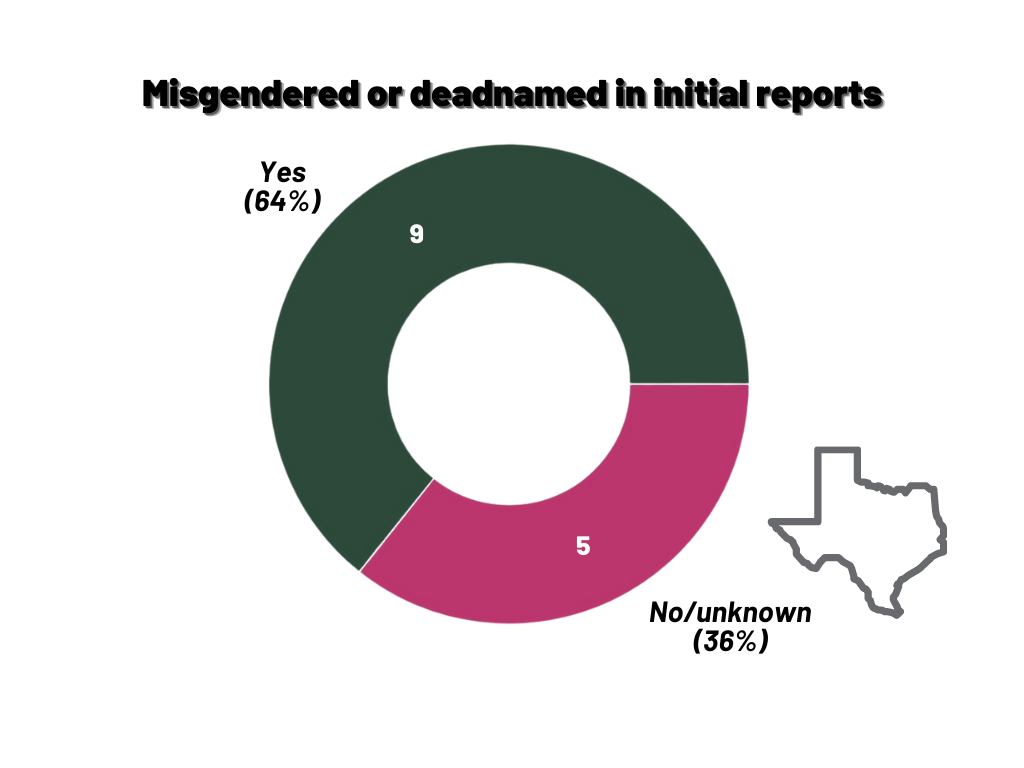
Between 2017-2020, police and/or local media misgendered at least nine (64%) of the reported victims of fatal transphobic violence in initial reports of their deaths.
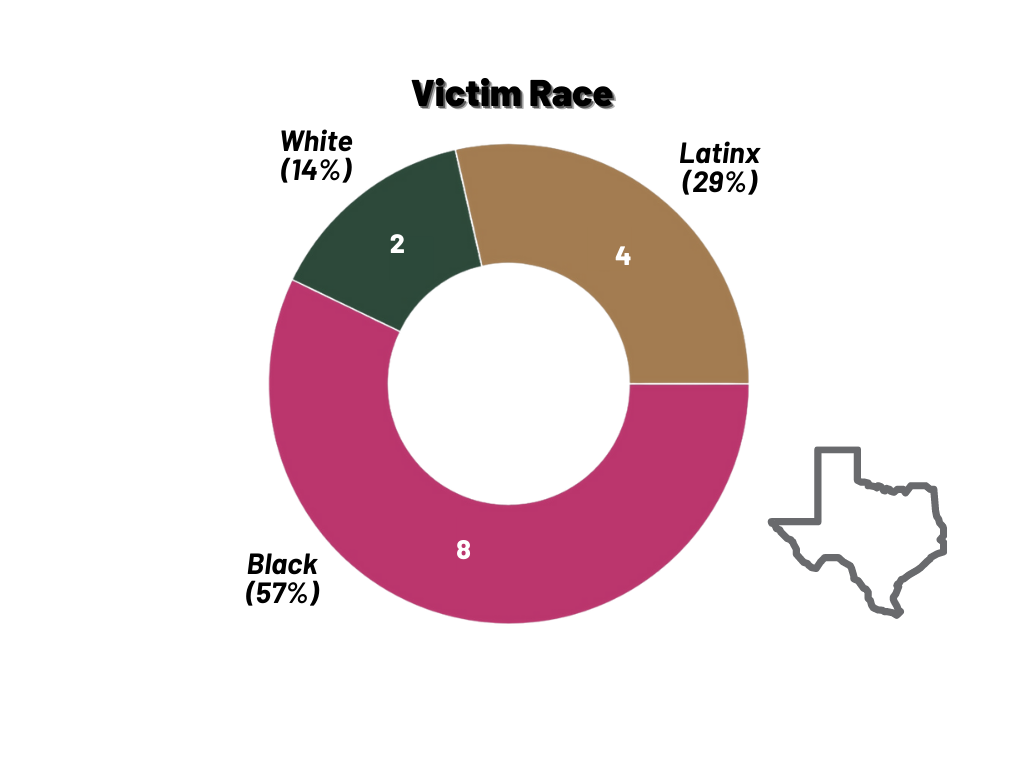
In Texas, eight (57%) of the reported victims of fatal transphobic violence were Black, four (29%) were Latinx, and two (14%) were white.
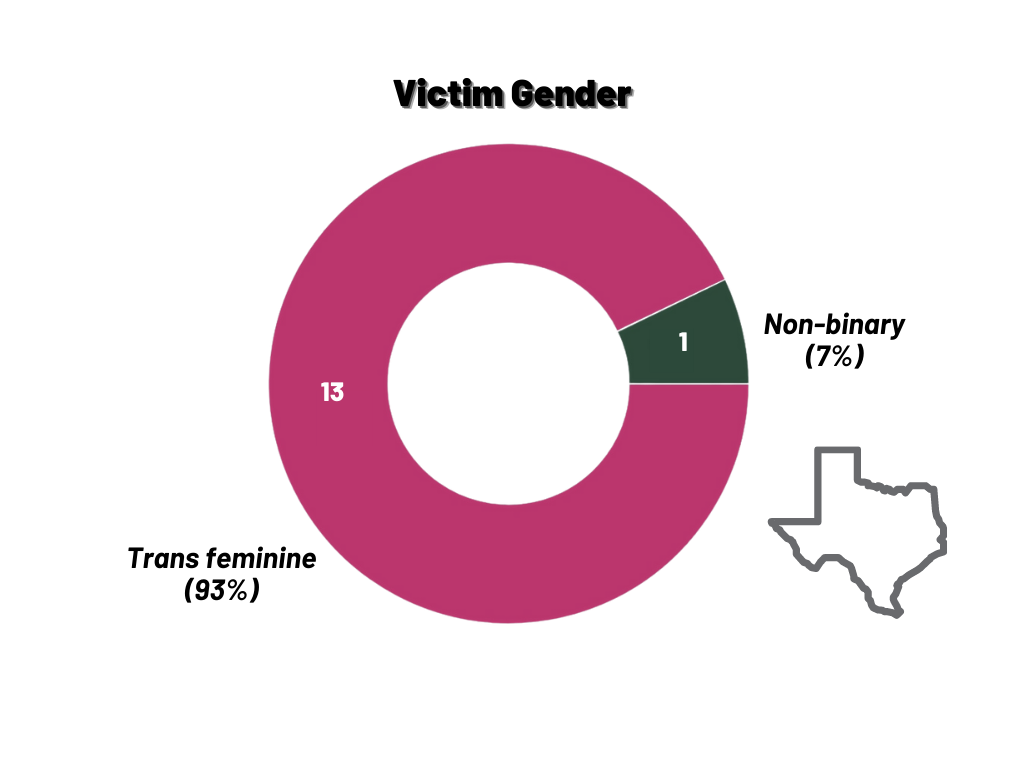
Out of the fourteen Texan reported victims of fatal transphobic violence between 2017-2020, thirteen (93%) were trans feminine. One was non-binary.
Political Climate
The primary issue facing trans and nonbinary Texans can be boiled down to one word: access. In Texas, TGNB individuals face monumental, often insurmountable barriers to safe housing, gender-affirming healthcare, jobs, accurate legal documents, safe bathrooms and locker rooms, and more.
These barriers are situated within a white supremacist, patriarchal paradigm that is tremendously reactive to identities that deviate from the prescribed norm. Within this oppressive system, Black trans women face the compounded harms of racism, misogyny, and transphobia — an intersection of oppressions known as transmisogynoir.
In many cases, barriers stem from a lack of legal protections. For example, although trans people are now legally protected from workplace discrimination by federal civil rights law, this does little to protect employees in at-will employment states like Texas; employers can still fire, or refuse to hire, any person for any reason. This drastically impacts employment rates for TGNB Texans and contributes to disproportionate rates of poverty and houselessness, particularly for Black trans women.
In other cases, barriers stem from intentional legislative attacks on trans existence. When Texas legislature meets, it is typically with the intention to push a familiar discriminatory agenda: strip away bodily autonomy from trans people and ban abortion. Over the last few years, Texas has ramped up the frequency of these attacks, repeatedly introducing bills aimed at barring trans people from public bathrooms, athletics, and more. Although many of these bills have fortunately not been passed into law, the frequency of transphobic rhetoric in statehouses and media only serves to normalize anti-trans sentiment throughout the state.
Numerous non-profits and mutual aid groups throughout Texas are working to meet the crucial access needs of the trans community. Unfortunately, bureaucratic barriers to these resources may prevent some trans people from accessing them. With tremendously limited resources and a huge community to serve, many groups have additional demographic requirements for individuals seeking aid. For example, groups aiming to serve HIV+ transgender people will often refuse aid to individuals who are not living with HIV. With Texas being so massive, there are not currently enough resources available to meet the needs of the TGNB community as a whole. Advocates believe that increasing access to these resources, while continuing to denounce white supremacy and transphobia on a broader scale, is a huge step toward interrupting cycles of harm and violence against trans and non-binary Texans.
Police Violence: Transgender and non-binary people, particularly those who are Black, Brown, Indigenous, and/or disabled, experience extremely elevated rates of police violence.
Texas has consistently made evident that their priority is to protect law enforcement, rather than the communities to which police officers cause harm. In 2016, Texas proposed the Back the Blue Act, which would have increased penalties for killing a police officer by making it a federal crime. Though this bill was not passed, Sen. Cornyn reintroduced it in following legislative years. In 2017, HB 2908, also known as the Police Protection Act, reclassified “terroristic threats” against police officers as a state jail felony.
In summer 2020, amid several months of sustained Black Lives Matter protests and calls to defund the police, Gov. Abbot warned Texan cities, “Defund police and you’ll lose ‘all’ tax revenue.” When Austin attempted to reduce their police budget for 2021, Gov. Abbot threatened to place their city law enforcement under state control.
Resources
This is a living list and we encourage community members to submit resources aimed at supporting trans and non-binary people in Texas.

